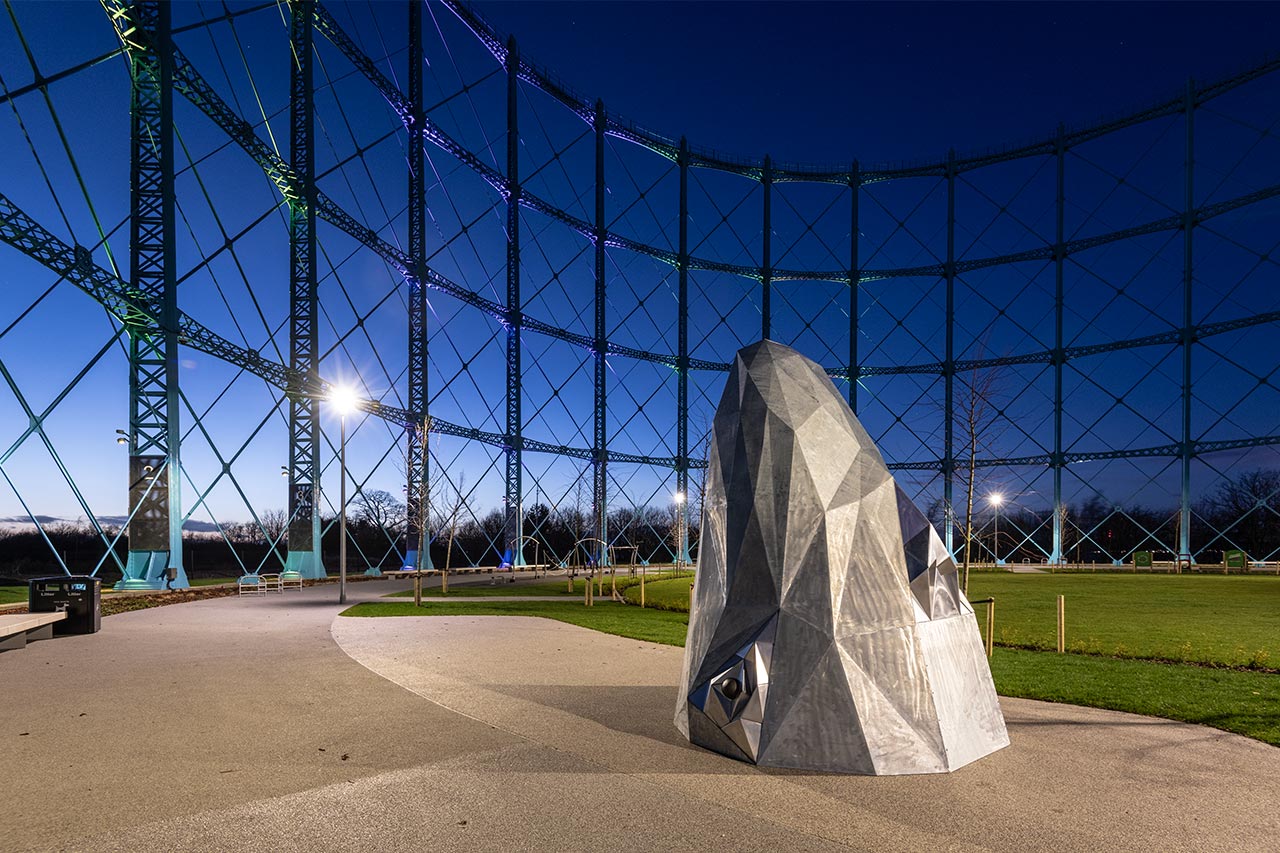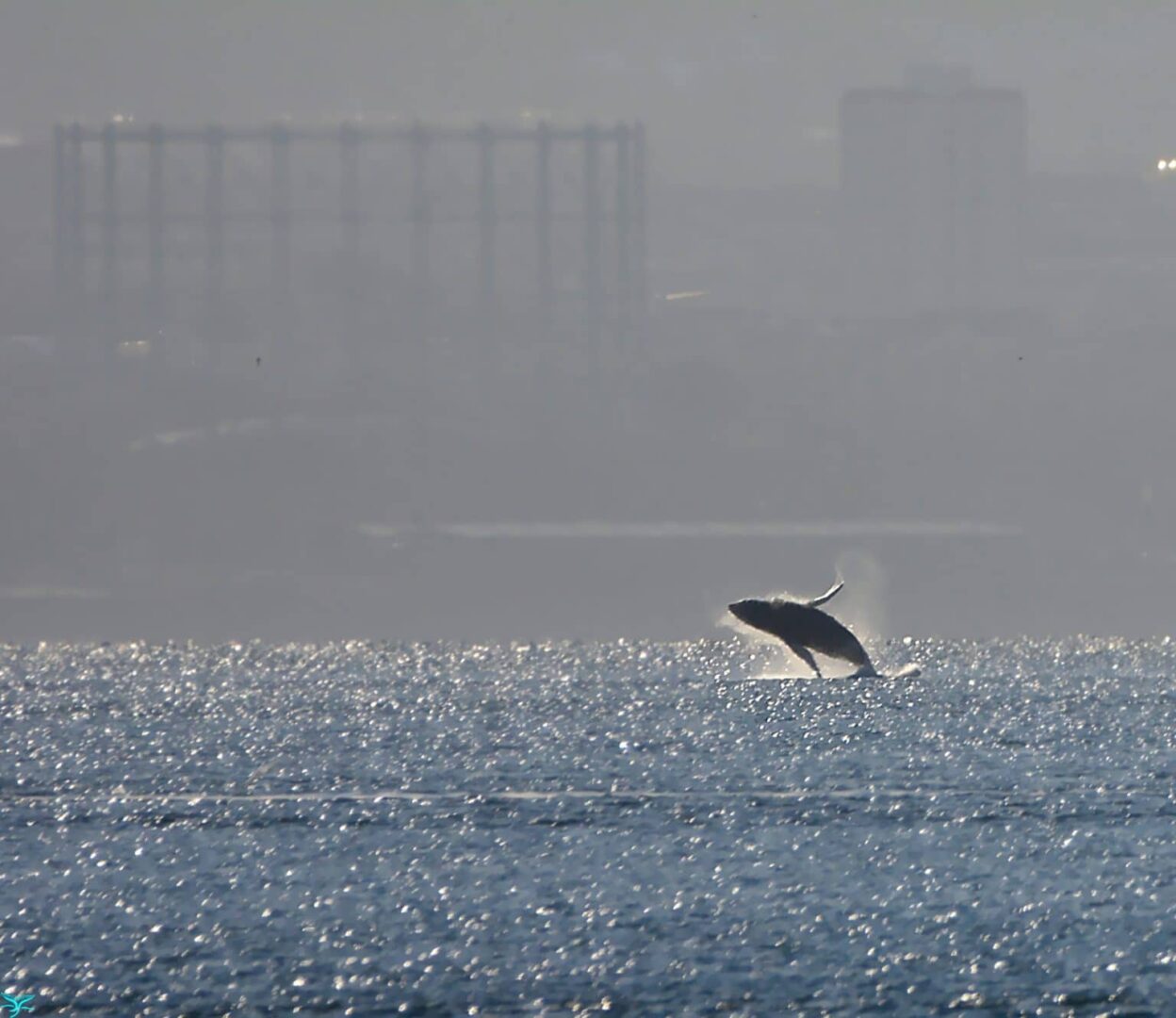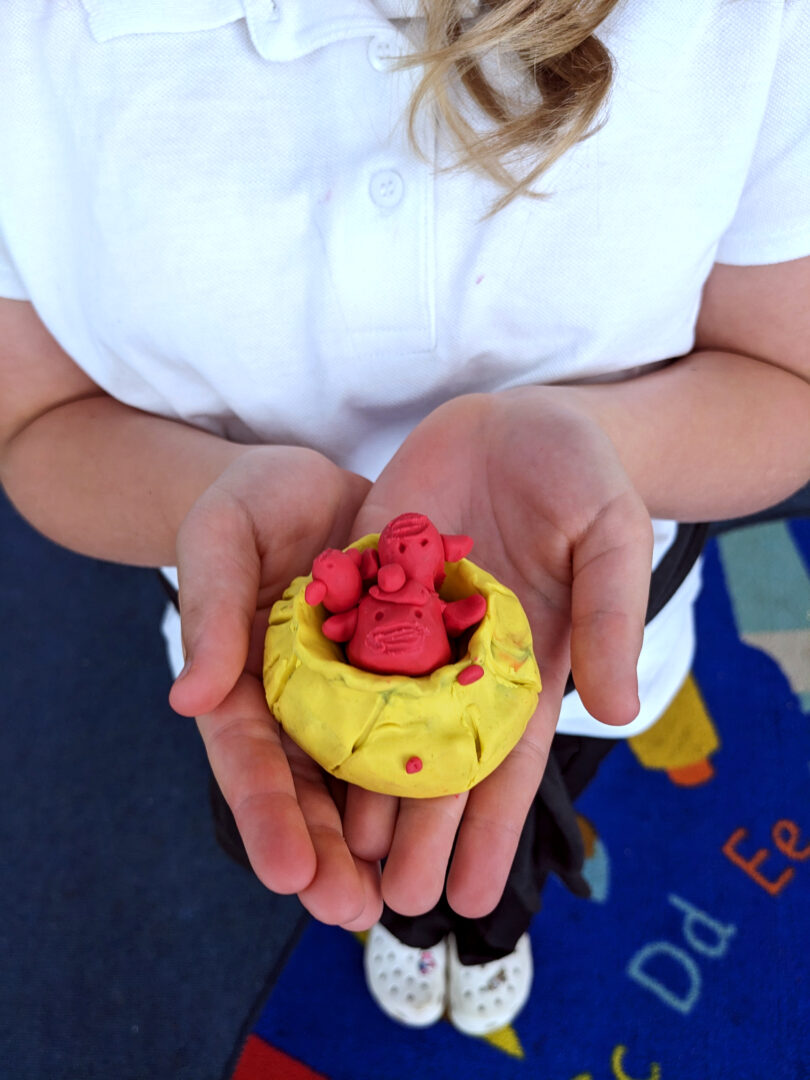
Granton Whale is a striking public art installation in Gasholder 1 Park, inspired by one of the Firth of Forth’s most special visitors: the humpback whale!
The large-scale sculpture, created by local Artist, Svetlana Kondakova Muir, takes the form of a monumental, life-sized whale partially submerged in the landscape as if emerging from the sea.
Crafted using galvanised steel and aluminium, the piece is designed to spark dialogue about environmental
sustainability, the importance of marine life and our connection to the natural world.
Please note, Granton Whale is being installed in two phases. The first phase, installed March 2025, includes the main shape of the whale’s head. The second phase, in August 2026, will involve adding community artworks to the sculpture and whale stripes/train tracks to the ground.
The Jewel of Local Wildlife
This design celebrates the local natural environment by portraying one of the Firth of Forth’s most special visitors. A steel and aluminium life-sized head of a humpback whale appears to be emerging from underwater vertically, an awe-inspiring shape, allowing visitors to experience the full might of this incredible creature. It has been made in a contemporary polygonal style, complimenting the gasholder structure and the faceted form relating to the idea that the humpback whale is the ‘jewel’ of local wildlife.

Collaboration with the Community
Granton and North Edinburgh residents were involved in the co-design and co-creation of this artwork via two rounds of community engagement. It will incorporate aluminium artworks created by local school children and college students, including an oyster reef, barnacles and other wildlife as well as tactile panels created by pupils of Oaklands School with complex support needs.

Links to the Past, Present and Future
The humpback whale relates to the local past and present as well as pointing to its future. Not only is it a spectacular sight but it is also connected to the Firth of Forth coastal communities and industries from whaling through to tourism today. The relationship with the water has always been important to the Granton community, it provided work, food, transport and a connection to nature. Christian Salvesen, which was at one stage the largest whaling company in the world, was located at nearby Leith and provided many locals with their livelihoods. Since the end of whaling in Scotland however whale populations have been recovering and sightings of humpbacks and other whales in the Firth of Forth are becoming increasingly regular since 2017. This is already beginning to provide economic opportunities for coastal communities by drawing in tourists from all over the UK and, if sightings increase in regularity and can be guaranteed in winter, has the potential to provide a financial boost at a time when it is most needed.
Aluminium stripes on the ground will echo the lines found on the underbelly of the humpback whale turning into life-sized train (or tram) track lines. Train tracks were the bloodlines to and from Granton, creating links to the harbour and the Gasworks, today they leave behind green walking and cycle paths. The stripes will hint at the past industries which made use of those tracks, including whaling. The tracks fade out representing the disappearance of these industries, leaving behind only one actual-sized track which could be interpreted as the trams which have returned to the area, just like the whales have. In this way the artwork will point to a more sustainable future and the hope for us to have a less exploitative and more appreciative relationship with nature.
Homage to Conservation
This artwork was designed in consultation with marine conservationists and celebrates some very important local conservation projects. The whale shape pays homage to Forth Marine Mammals, a citizen science project which involves people reporting sightings of marine mammals, the data is collated and can be used to direct policy and help to protect these animals in the future. It gives a powerful voice and agency to coastal communities and helps them to become the responsible custodians of the Forth.
The inclusion of a bronze oyster reef relates to Restoration Forth, a major marine restoration programme working with communities to restore seagrass habitats and European flat oyster populations in the Firth of Forth. Over 100 years ago, oysters used to be an abundant and cheap food source in Granton, however the oyster reefs are now being restored for a different purpose. Oysters have incredible capabilities of filtering and cleaning water, absorbing everything including toxins and microplastics, as well as increasing biodiversity by providing a rich habitat for other wildlife.